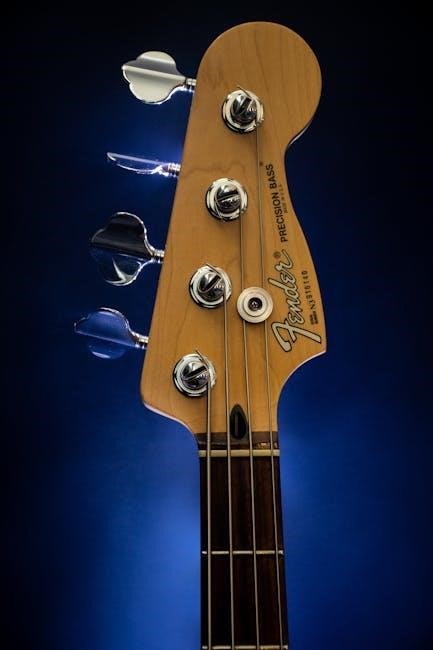Samuel Barber’s Adagio for Strings, composed in 1936, is a timeless masterpiece originally from his String Quartet, Op. 11. Its haunting beauty has made it a staple in classical music, featured in films, memorials, and orchestral performances worldwide, with sheet music widely available for various instruments.

Origin and Composition
Samuel Barber’s Adagio for Strings originated as the second movement of his String Quartet, Op. 11, composed in 1936. It was later transcribed for string orchestra by Barber.
The piece is dedicated to Barber’s aunt and uncle, Louise and Sidney Homer, reflecting his deep emotional expression and mastery of lyrical composition.
Background
Samuel Barber’s Adagio for Strings was composed in 1936 as part of his String Quartet, Op. 11. The piece was dedicated to Barber’s aunt and uncle, Louise and Sidney Homer, reflecting his deep emotional connection to the work. Initially intended for a string quartet, it gained widespread recognition after being transcribed for a full string orchestra. The composition is characterized by its hauntingly beautiful melody and expressive harmonies, which evoke profound emotional responses. Its premiere performance by the NBC Symphony Orchestra, led by Arturo Toscanini in 1938, marked the beginning of its enduring popularity. Today, it remains one of Barber’s most celebrated works.
Original String Quartet
Samuel Barber’s Adagio for Strings originated as the second movement of his String Quartet, Op. 11, composed in 1936. The quartet was written during a summer Barber spent in Europe, where he focused on refining his craft. The slow movement, marked “Molto adagio,” features a lyrical and introspective theme that showcases Barber’s mastery of melodic writing. Although initially conceived for a string quartet, the movement’s universal appeal led to its transcription for string orchestra, catapulting it to fame. The original quartet version remains a testament to Barber’s ability to create deeply moving music within a chamber setting, preserving the intimate essence of the composition.

Musical Structure
Samuel Barber’s Adagio for Strings features a lyrical melody and emotional depth, with a slow tempo marked “Molto adagio.” Its structure builds on a simple theme, developing tension and resolution through rich harmonies.
Melody and Harmony
The Adagio for Strings is renowned for its lyrical melody and profound emotional depth. The piece begins with a simple, haunting theme played by the violins, which gradually unfolds across the ensemble. Harmonically, Barber employs lush, chromatic progressions that create a sense of tension and resolution. The interplay between the strings, particularly the violins and cellos, builds a rich, evocative texture. The melody’s expressiveness is heightened by the use of dynamics, with moments of soft, delicate playing contrasting with swelling crescendos. This balance of simplicity and complexity in both melody and harmony has made the work a timeless masterpiece of American classical music.
Tempo and Dynamics
Barber’s Adagio for Strings is marked “Molto adagio,” creating a slow, mournful tempo that underscores its emotional depth. The piece begins with a soft, pianissimo introduction, gradually building to a dramatic fortissimo climax. Dynamics play a crucial role, with subtle shifts between pp and ff that enhance the work’s expressive qualities. The tempo’s steady, mournful pace allows for rich phrasing and rubato, while the dynamic contrasts create a sense of tension and resolution. This interplay between tempo and dynamics gives the Adagio its iconic, haunting beauty, making it a cornerstone of orchestral repertoire and a favorite for use in film and memorials.

Arrangements and Transcriptions
Adagio for Strings has been transcribed for various ensembles, including piano, guitar, and full orchestra, expanding its reach beyond its original string quartet roots.
Orchestral Version
The orchestral version of Adagio for Strings expands the original string quartet into a lush, emotive arrangement for full orchestra. Premiered in 1938 by Arturo Toscanini, it captures the piece’s haunting beauty on a grand scale. The orchestration enhances the work’s emotional depth, making it a favorite for films, memorials, and public performances. Its universal appeal has led to widespread use in various media, solidifying its place in classical music history. The orchestral arrangement is available in sheet music formats, allowing ensembles to perform this beloved composition with rich, layered harmonies that resonate deeply with audiences worldwide.
Instrumental Arrangements
Samuel Barber’s Adagio for Strings has been adapted into numerous instrumental arrangements, expanding its reach beyond the original string quartet and orchestral versions. These include piano transcriptions, flute arrangements, and even guitar versions, making the piece accessible to a wide range of musicians and audiences. For instance, a piano transcription by Philippe Marillia is available, while arrangements for violin, viola, and cello maintain the work’s emotional depth. Additionally, unique interpretations, such as a carillon performance by Vera and Joey Brink, showcase the piece’s versatility. These arrangements highlight the timeless appeal of Adagio for Strings, allowing its haunting beauty to resonate across different instrumental settings while preserving its original emotional essence.
Historical Performances
Samuel Barber’s Adagio for Strings premiered in 1938 with Arturo Toscanini leading the NBC Symphony Orchestra. It was later performed at Einstein’s funeral and JFK’s memorial, cementing its historical significance.
Premiere with Arturo Toscanini
In November 1938, conductor Arturo Toscanini led the NBC Symphony Orchestra in the historic premiere of Samuel Barber’s Adagio for Strings. This landmark performance marked the piece’s first major public debut, broadcast nationally on radio. Toscanini, known for his meticulous interpretations, brought profound depth to Barber’s composition, captivating audiences and critics alike. The premiere not only solidified the work’s place in classical music but also showcased Toscanini’s ability to elevate emotional expression. This event remains a cornerstone in the history of American classical music, highlighting Barber’s mastery and Toscanini’s interpretative genius.
Notable Performances
Samuel Barber’s Adagio for Strings has been performed in numerous historic and culturally significant contexts. It was played at the funerals of Albert Einstein and John F. Kennedy, underscoring its solemn beauty. The piece gained further popularity after being featured in films like Platoon and in various commercials. Additionally, it has been remixed by trance musicians, introducing it to new audiences. Its emotional resonance has made it a favorite in classical music, with performances by leading orchestras worldwide. These notable renditions highlight the work’s universal appeal and its ability to transcend traditional classical music settings, solidifying its place in cultural history.
Cultural Impact
Samuel Barber’s Adagio for Strings has left an indelible mark on culture, transcending classical music boundaries. Its emotive depth has made it a staple in films like Platoon, commercials, and even trance music. Played at Albert Einstein’s and JFK’s funerals, it symbolizes mourning and reflection. Its universal appeal has led to widespread use in media, introducing it to diverse audiences. The piece’s ability to evoke profound emotions has cemented its status as a cultural icon, bridging gaps between traditional and contemporary music. Its enduring relevance continues to inspire new generations, making it one of the most recognizable and cherished compositions of the 20th century.

Sheet Music Availability
Sheet music for Samuel Barber’s Adagio for Strings is widely available in various formats, including PDF and MIDI. Platforms like Musicnotes, Sheet Music Plus, and JW Pepper offer arrangements for instruments such as piano, violin, and string quartets. Digital downloads provide instant access, while transpositions and scores cater to diverse musical needs. Many arrangements, including those by RoboNeo9 and Julia Kim, are accessible online. This accessibility ensures that musicians of all levels can perform and enjoy Barber’s masterpiece. The sheet music’s popularity reflects the piece’s enduring appeal, making it a cherished resource for both professionals and enthusiasts.

Legacy and Recognition
Samuel Barber’s Adagio for Strings holds a revered place in classical music history. It has been performed at significant events, including the funerals of Albert Einstein and JFK, and featured in films like Platoon. The piece has transcended traditional classical audiences, becoming a popular choice for remixes in trance music. Its emotional depth and universal appeal have solidified its status as an American musical icon. Barber’s work earned him two Pulitzer Prizes, further cementing his legacy. The Adagio remains a testament to his genius, continuing to inspire new generations of musicians and audiences alike across the globe.
Samuel Barber’s Adagio for Strings stands as a profound and enduring work in classical music. Its evolution from a string quartet to an orchestral masterpiece highlights its versatility and emotional resonance. The piece has transcended traditional concert halls, appearing in films, memorials, and popular culture, ensuring its lasting impact. With sheet music widely available, it remains accessible to musicians and enthusiasts alike. Barber’s legacy is cemented through this iconic composition, which continues to evoke powerful emotions and inspire new interpretations. Its timeless beauty and universal appeal ensure that the Adagio will remain a cherished piece for generations to come.
References
For further exploration of Samuel Barber’s Adagio for Strings, numerous resources are available. Sheet music can be downloaded from platforms like J.W. Pepper and Sheet Music Plus. The composition’s history and arrangements are detailed on websites such as Classical Archives and Musicnotes. Additionally, academic articles and biographies provide insights into Barber’s life and creative process. These sources offer a comprehensive understanding of the piece’s significance and its enduring impact on classical music.
